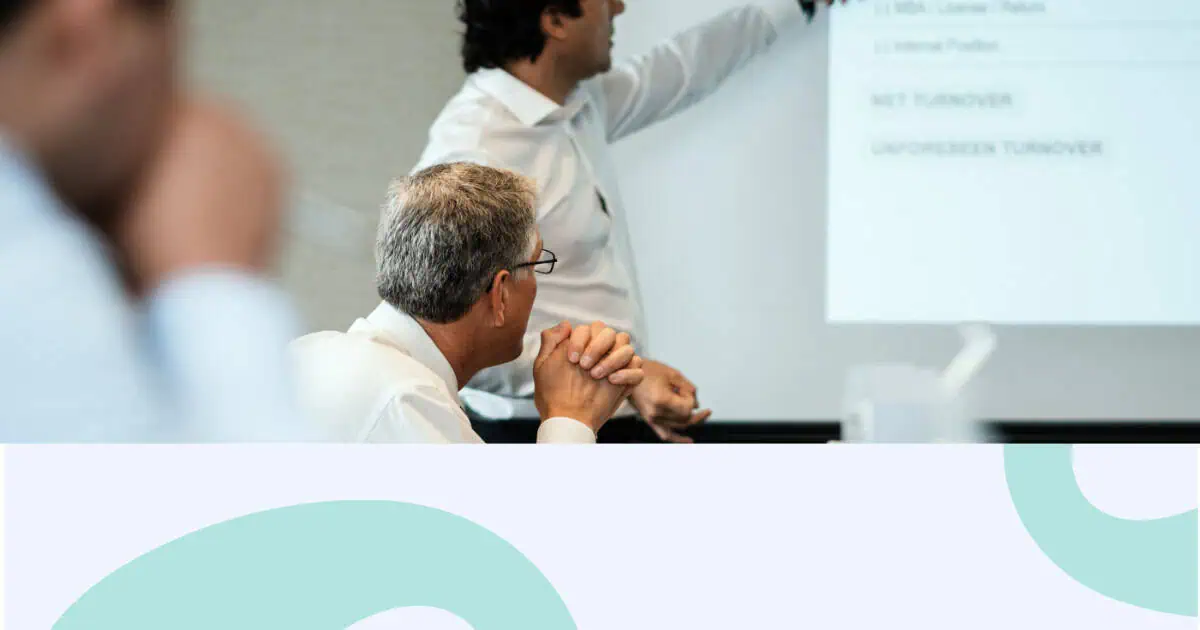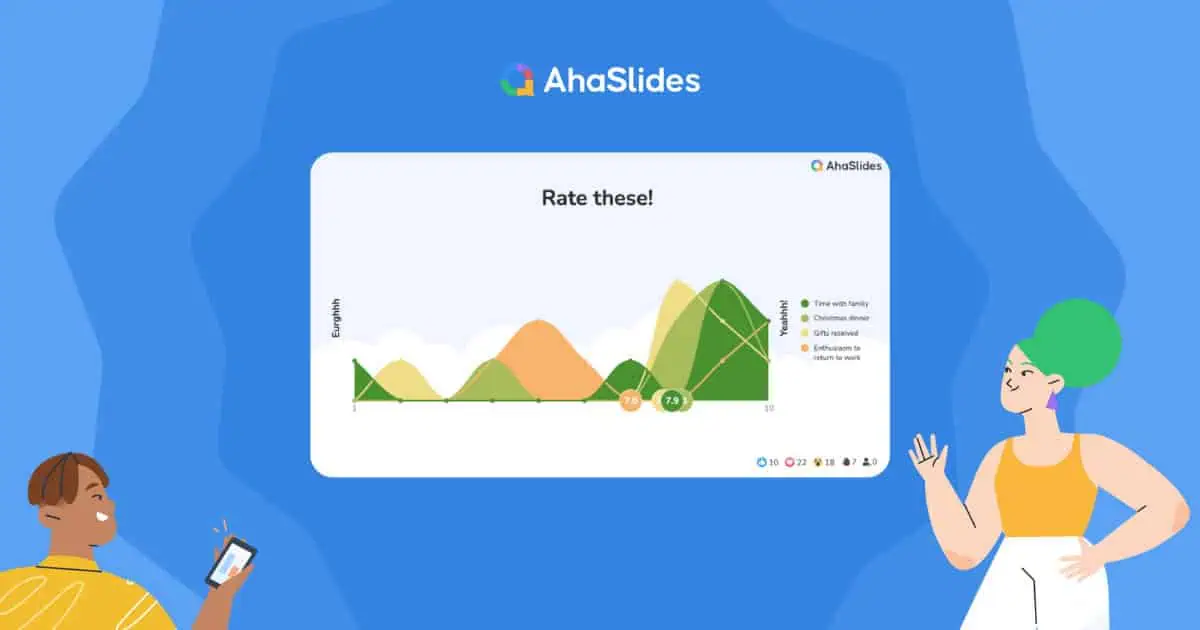Yn 'e TikTok-oandachtsekonomy fan hjoed hawwe jo sawat 8 sekonden om ien syn belangstelling te wekken - minder tiid as in goudfisk. As dat skrikwekkend klinkt foar in presintaasje fan 5 minuten, is hjir it goede nijs: koarte presintaasjes binne jo geheime wapen.
Wylst oaren troch 60-dia-dekken swalkje en de eagen glêzich sjogge, sille jo in rjochte boadskip oerbringe dy't bliuwt. Oft jo no oan ynvestearders pitche, in team op ôfstân traine, ûndersyksresultaten presintearje of in ynterview hawwe foar jo dreamrol, it behearskjen fan it 5-minutenformaat is net allinich handich - it is karriêredefiniearjend.
Dizze hantlieding brûkt presintaasjewittenskip, ynsjoch fan profesjonele trainers dy't jierliks hûnderten sesjes leverje, en bewiisde techniken fan TED-sprekkers om jo te helpen presintaasjes te meitsjen dy't boeie, oertsjûgje en in bliuwende ynfloed hawwe.
Table of Contents
Wêrom presintaasjes fan 5 minuten in oare oanpak fereaskje
Ûndersyk fan neurowittenskipper John Medina lit sjen dat de oandacht fan it publyk elke 10 minuten signifikant ôfnimt by tradisjonele presintaasjes. Yn firtuele omjouwings krimpt dat finster nei mar 4 minuten. Jo presintaasje fan 5 minuten past perfekt binnen dizze swiete plak foar belutsenens - mar allinich as jo it goed ûntwerpe.
De ynset is heger mei koarte presintaasjes. Elk wurd telt. Elke slide is wichtich. Der is gjin tiid foar filler, gjin romte foar oanpassingen, en nultolerânsje foar technyske ûnsin. Undersyk yn 'e sektor lit sjen dat 67% fan professionals no bondige, rjochte presintaasjes leaver hawwe as lange - mar de measte presintators benaderje koarte presintaasjes noch altyd as gearfette ferzjes fan lange, wat selden wurket.
Hoe meitsje in 5-minuten presintaasje
Stap 1: Kies jo ûnderwerp mei sjirurgyske presyzje

De grutste flater dy't presintators meitsje? Besykje tefolle grûn te behanneljen. Jo presintaasje fan 5 minuten moat oanpakke ien kearnidee—net trije, net iens twa. Tink deroan as in laser, net as in skynwerper.
Dyn ûnderwerp moat dizze fjouwerdielige test slagje:
- Ien fokuspunt: Kinne jo it yn ien sin útlizze? As net, beheine it dan.
- Relevânsje fan it publyk: Lost it in probleem op dêr't se aktyf mei te krijen hawwe? Sla ynformaasje oer dy't se al kenne.
- Ienfâldigens: Kinne jo it útlizze sûnder komplekse eftergrûn? Bewarje yngewikkelde ûnderwerpen foar langere formaten.
- Dyn ekspertize: Hâld dy oan ûnderwerpen dy'tsto djip kennest. De tariedingstiid is beheind.
Foar ynspiraasje, beskôgje dizze bewiisde ûnderwerpen fan 5 minuten yn ferskate konteksten:
- Profesjonele ynstellings: 3 datagestuurde strategyen om klantferlies te ferminderjen, Hoe AI-ark ús workflow opnij foarmje, Wêrom ús resultaten fan it tredde fearnsjier in strategyske draaipunt oanjaan
- Training & L&D: Ien gewoante dy't de prestaasjes fan teams op ôfstân transformearret, De psychology efter meiwurkersbetrokkenheidsskoares, Hoe feedback te jaan dy't it gedrach eins ferbetteret
- Akademyske konteksten: Wichtige befiningen fan myn duorsumensûndersyk, Hoe sosjale media ynfloed hat op beslútfoarming by adolesinten, De etyk fan genbewurking yn trije echte senario's
Stap 2: Untwerp dia's dy't fersterkje (net ôfliede)
Hjir is in wierheid dy't amateur-presintators fan profesjonele presintators skiedt: do bist de presintaasje, net dyn dia's. Dia's moatte jo ferhaal stypje, net ferfange.
De fraach oer it tellen fan dia's
Undersyk fan presintaasje-eksperts suggerearret 5-7 dia's foar in presintaasje fan 5 minuten - sawat ien dia per minút mei tiid foar jo iepening en sluting. TED-sprekkers brûke lykwols soms 20 dia's dy't fluch foarút geane (10-15 sekonden elk) om fisuele momentum te behâlden. Wat wichtiger is as kwantiteit is dúdlikens en doel.
Prinsipes fan ynhâldûntwerp
- Minimale tekst: Maksimum 6 wurden per dia. Dyn skript fan 700 wurden moat útsprutsen wurde, net werjûn wurde.
- Visuele hierargy: Brûk grutte, kleur en wyt romte om de oandacht te lieden nei wat it wichtichste is.
- Datavisualisaasje: Ien oertsjûgjende statistyk of grafyk per slide is better as paragrafen mei útlis.
- Konsekwint ûntwerp: Deselde lettertypen, kleuren en yndielingen oeral behâlde profesjonaliteit.
Pro tip: Meitsje jo presintaasje ynteraktyf mei live enkêtes, Q&A-funksjes of koarte kwissen. Dit feroaret passive sjoggers yn aktive dielnimmers en ferbetteret it ûnthâlden fan ynformaasje dramatysk. Tools lykas AhaSlides lit jo dizze funksjes naadloos ynbêde, sels yn formaten fan 5 minuten.
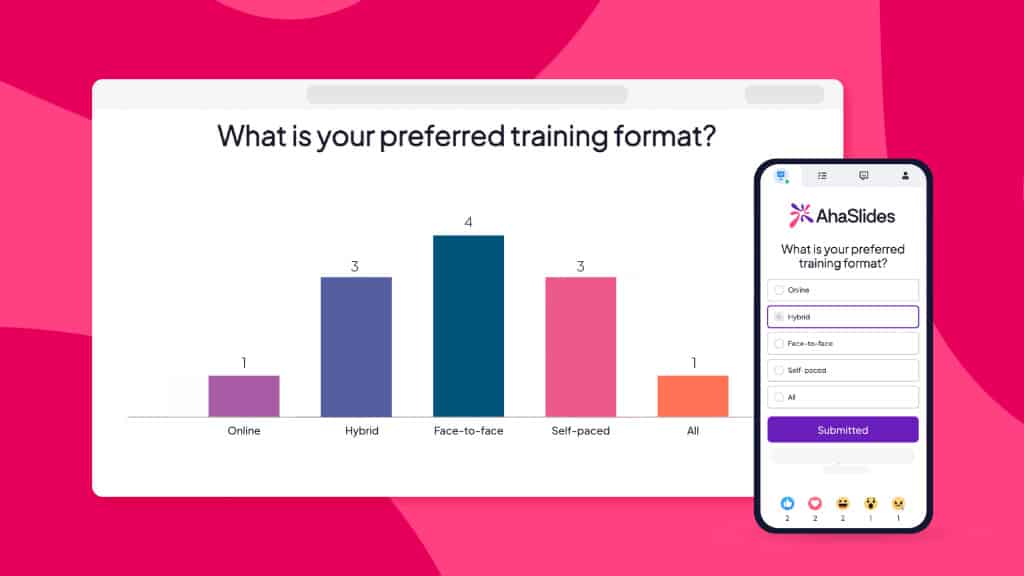
Stap 3: Behearskje de timing mei militêre presyzje
Yn in presintaasje fan 5 minuten hat elke sekonde in taak. Der is gjin buffer foar it útspattjen of it herstellen fan flaters. Profesjonele sprekkers folgje dizze struktuer dy't troch de striid beproefd is:
De bewiisde formule foar tiidferdieling
- 0:00-0:30 – Iepeningshook: Lûk de oandacht mei in ferrassend feit, in provosearjende fraach of in oansprekkend ferhaal. Sla lange ynliedingen oer.
- 0:30-1:30 – It probleem: Stel fêst wêrom't jo publyk omtinken jaan moat. Hokker útdaging behannelet jo ûnderwerp?
- 1:30-4:30 – Dyn oplossing/ynsjoch: Dit is dyn kearnynhâld. Jou 2-3 wichtige punten mei stipejend bewiis. Lit alles wat net essensjeel is fuort.
- 4:30-5:00 – Konklúzje & oprop ta aksje: Fersterkje jo haadboadskip en fertel it publyk krekt wat se folgjende dwaan moatte.
Oanpassing fan firtuele presintaasje
Presintearje jo op ôfstân? Bou elke 4 minuten mominten fan belutsenens yn (neffens it ûndersyk fan Medina). Brûk enkêtes, freegje om antwurden yn 'e petearen, of stel retoryske fragen. Kontrolearje jo kamerahoek (eachhichte), soargje foar sterke ferljochting fan foaren, en test de audiokwaliteit fan tefoaren. Firtuele publyk is gefoeliger foar ôflieding, dus ynteraksje is net opsjoneel - it is essensjeel.
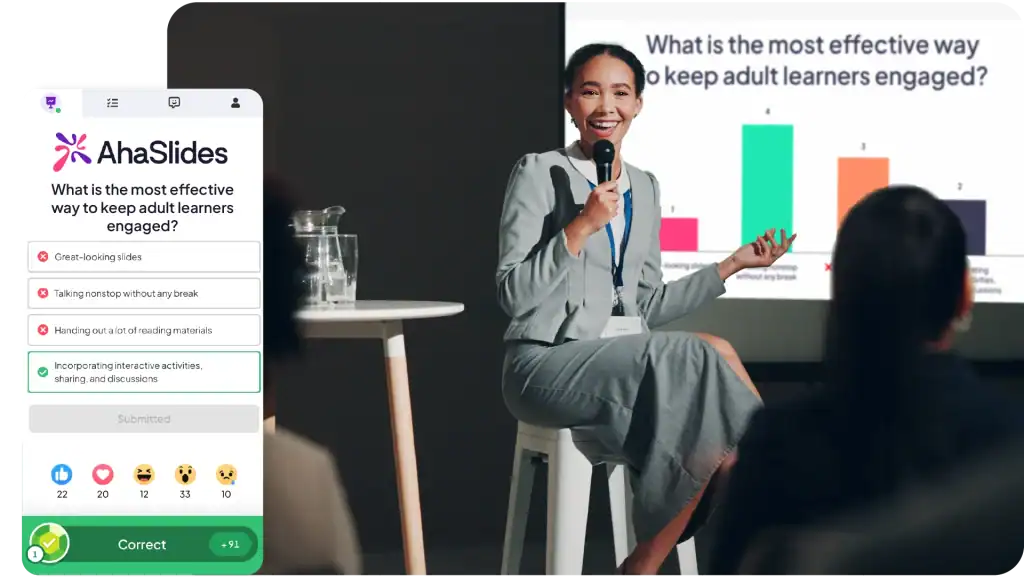
Stap 4: Leverje mei autentyk fertrouwen

Sels briljante ynhâld mislearret mei minne presintaasje. Hjir is hoe't professionals it momint fan 'e wierheid benaderje:
Oefenje as ôfhinklik dyn karriêre derfan (omdat it miskien wol)
Oefenje jo presintaasje fan 5 minuten teminsten 5-7 kear. Brûk in timer. Nim josels op en besjoch it werom - pynlik mar ûnskatber weardefol. Oefenje oant jo jo ynhâld natuerlik kinne leverje sûnder dia's te lêzen. Spierûnthâld draacht jo troch nervositeit hinne.
Leveringstechniken dy't amateurs fan professionals skiede
- Vokale ferskaat: Fariearje tempo, toanhichte en folume. Pauzearje strategysk foar klam - stilte is krêftich.
- Lichaamstaal: Brûk iepen gebearten yn persoan en beweech mei in doel. Beheine gebearten op 'e kamera (se fersterkje) en hâld eachkontakt mei de lens.
- Storytelling: Doch der in koart, relevant foarbyld of anekdoate by. Ferhalen ferheegje it ûnthâld mei 22 kear yn ferliking mei feiten allinich.
- Enerzjybehear: Pas dyn enerzjy oan dyn berjocht oan. Entûsjast foar ynspiraasje, mar meiteld foar serieuze ûnderwerpen.
- Technyske klearheid: Test apparatuer 30 minuten fan tefoaren. Haw reserveplannen foar ferbiningsproblemen.
It geheim fan 'e ferbining mei it publyk
Tink oan jo presintaasje as in petear, net as in optreden. Hâld eachkontakt (of sjoch nei de kamera foar firtuele presintaasjes). Erken reaksjes. As jo stroffelje, pauze dan koart en gean troch - publyk ferjout autentisiteit, mar net as it robotysk lêzen fan dia's.
Geheime tip: Witte jo net oft jo presintaasje fan 5 minuten ynfloed hat? Brûk in feedback-ark om it gefoel fan it publyk fuort te sammeljen. It duorret minimaal ynspannings, en jo foarkomme dat jo weardefolle feedback ûnderweis ferlieze.
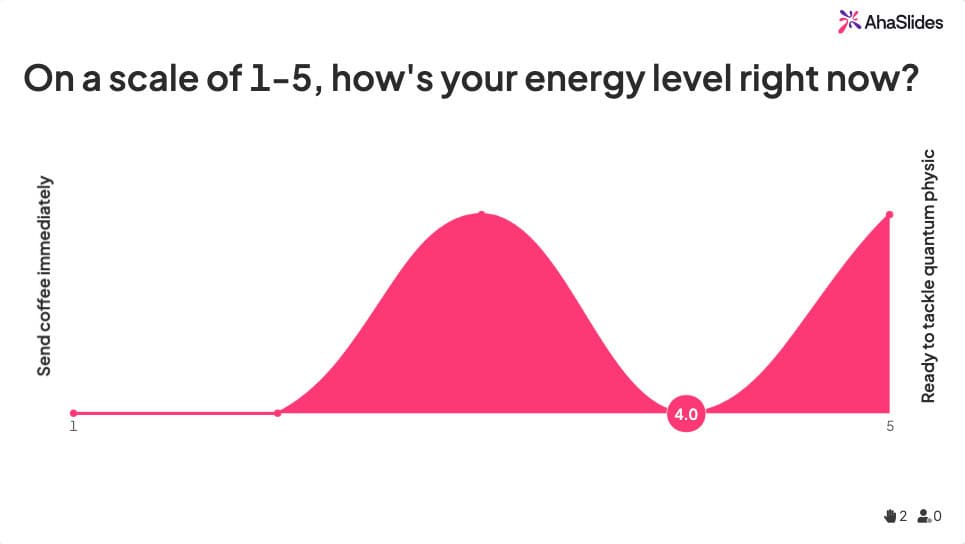
5 mienskiplike flaters by it jaan fan in presintaasje fan 5 minuten
Wy oerwinne en oanpasse troch trial and error, mar it is makliker om rookie-flaters te foarkommen as jo witte wat se binne👇
- Rinne oer tiid: It publyk merkt it op. It jout oan dat der minne tarieding is en it ûntbrekt oan harren skema. Oefenje om om 4:45 oere klear te wêzen.
- Oerladen fan dia's: Dia's mei in soad tekst meitsje dat it publyk lêst ynstee fan harket. Jo ferlieze har oandacht daliks.
- Oefening oerslaan: "It binne mar 5 minuten" is gefaarlik tinken. Koarte formaten freegje MEAR oefening, net minder.
- Besykje alles te dekken: Djipte is better as breedte. Ien dúdlik ynsjoch dat resonearret is better as fiif punten dy't nimmen ûnthâldt.
- Jo publyk negearje: Pas ynhâld oan op harren ynteresses, kennisnivo en behoeften. Generike presintaasjes slagje der noait yn.
5-Minute Presintaasje Foarbylden
Bestudearje dizze foarbylden om prinsipes yn aksje te sjen:
William Kamkwamba: 'Hoe't ik de wyn benutte'
Dit TED Diskusje video presintearret it ferhaal fan William Kamkwamba, in útfiner út Malawi dy't as bern yn earmoede in wynmûne boude om wetter te pompen en elektrisiteit foar syn doarp op te wekken. Kamkwamba syn natuerlike en rjochtlinige ferhalefertelling koe it publyk boeije, en syn gebrûk fan koarte pauzes foar minsken om te laitsjen is ek in oare geweldige technyk.
Susan V. Fisk: 'It belang fan bondich wêze'
Dit training video biedt nuttige tips foar wittenskippers om har petear te strukturearjen om te passen by it presintaasjeformaat "5 Minute Rapid", dat ek yn 5 minuten útlein wurdt. As jo fan plan binne om in "Hoe-to" rappe presintaasje te meitsjen, sjoch dan nei dit foarbyld.
Jonathan Bell: 'Hoe kinne jo in geweldige merknamme meitsje'
Lykas de titel al seit, sil sprekker Jonathan Bell jo in step-by-stap gids oer hoe't jo in bliuwende merknamme kinne meitsje. Hy komt rjocht op it punt mei syn ûnderwerp en brekt it dan op yn lytsere ûnderdielen. In goed foarbyld om fan te learen.
PACE Invoice: '5 Min Pitch at Startupbootcamp'
Dizze fideo lit sjen hoe PACE Invoice, in start-up dy't spesjalisearre is yn betellingsferwurking mei meardere faluta, koe har ideeën dúdlik en beknopt foar ynvestearders pleatse.
Will Stephen: 'Hoe tûk klinke yn jo TEDx-petear'
Mei help fan in humoristyske en kreative oanpak, Will Stephen's TEDx Oerlis liedt minsken troch de algemiene feardigens fan sprekken yn it iepenbier. In must-watch om jo presintaasje yn in masterstik te meitsjen.
Klear om presintaasjes te meitsjen dy't echt boeiend binne? Begjin mei de ynteraktive presintaasjetools fan AhaSlides en transformearje jo folgjende presintaasje fan 5 minuten fan ferjitber nei ûnferjitlik.


